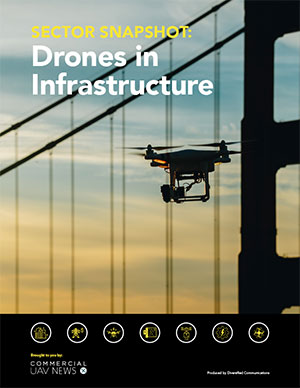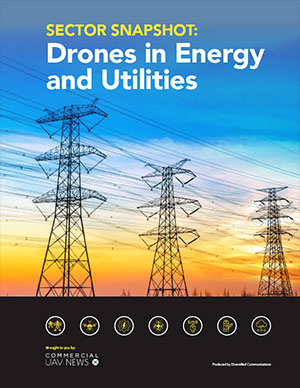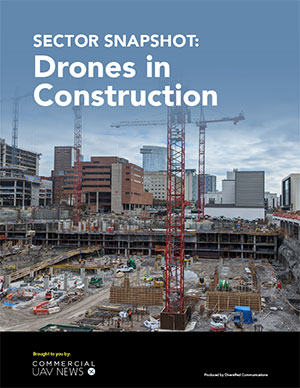Last week, professionals and industry leaders from across the commercial drone industry came together for the annual Commercial UAV Expo, which took place September 2-4 at Caesars Forum in Las Vegas, Nevada. The three-day event included a full conference program that featured presentations, roundtables, and panel discussions, as well as an exhibit hall floor with over 200 companies exhibiting, plus a new indoor demonstration area. As reported on Monday, the event welcomed nearly 3400 attendees who represented all 50 states across the U.S. and 62 countries overall, plus 230 exhibitors from 28 countries.
Less than a week since the end of the show, there is still a lot of come-down from the whirlwind of a week, but this past weekend presented a chance to reflect on all that was heard throughout the week, both in formal sessions and the informal conversations that define the exhibit hall floor. At Commercial UAV News, we will be building upon our already existing coverage at the event, but to keep things at a higher level, below you can find three of the biggest trends that ultimately defined this author’s experience in Las Vegas.
Knowing Your Use Case
If there was one defining theme that cut across the entire event, which in and of itself covers a variety of industries that ostensibly would have different micro-trends, it was the importance of starting with your use case to drive value. For a long time, the commercial UAV industry was new enough that simply being able to talk about the technological capabilities was enough to turn heads. And to be fair, that still rings true to an extent, as there were some impressive new tools and innovations on display at Caesars Forum.
With that being said, a trend that has been building for a few years feels like it is nearing its final form, in which the industry is no longer impressed simply by new capabilities. Instead, professionals from throughout the sector recognize that their space has reached a new level of maturity in which customers and other stakeholders are expecting demonstrable value. This seems like a simple concept – doesn’t every business expect value? – but putting it into practice for a nascent industry can be easier said than done.

Thus, it was a conversation that ran through nearly every session I personally was able to sit through during the week. That included Wednesday’s keynote, which focused on the cost of inaction and how to drive ROI with your drone program. In that session, along with others throughout the week, the message driven home by speakers was to know the use case before starting a project.
In other words, don’t just take the fact that you have a piece of technology and then try to shoehorn said technology into the project because you have it. Instead, look at your project and what you’re trying to achieve, and then use only the tools you need to collect the best possible data for the necessary output. It not only prevents potential unnecessary spending, but also ensures that every action taken during the project is with the end deliverable in mind.
One of the best ways this topic was explained was during a presentation by Austin Lay, a senior VDC manager with Layton Construction. He was explaining how difficult it can be to explain surveying workflows and the value created to those who aren’t within that niche, and so he tied everything back to the process of smoking a brisket. It was a great illustration of planning out every step within a project to deliver value, and put in a way that both laymen and experts can equally understand.
The Part 108 NPRM
In what should surprise nobody who has been paying attention to the industry over the last few weeks, the dominant topic of conversation both in sessions and throughout the venue was the Part 108 NPRM released by the FAA in August. This proposed rule aims to bring the industry forward, setting regulations for beyond visual line of sight (BVLOS) drone operations, among other important topics for the sector. Crucially, the NPRM is not the final regulation that will shape the industry. Instead, the industry is in the midst of a 60-day commenting period that will close on October 6.
That made this conference the perfect opportunity to talk about the NPRM, both what is encouraging and what some think needs to be altered before the final rule is released. This year’s Commercial UAV Expo included multiple panels dedicated entirely to this proposed rule, a roundtable discussion for industry professionals to have open conversations about the proposed rule, and, of course, plenty of informal conversations.
The main takeaway is that many throughout the industry believe this is a good step in the right direction – an unsurprising take, given how long the industry has been waiting for this ruling – but that there is a lot left to be hammered out. Most notably, many pilots are unsure about where the new rule leaves them, as there is little clarity about how Part 107 waiver holders would proceed under these new rules, which focus more on organizational responsibility than individual pilots. You can read about one of our Part 108 sessions already, and be on the lookout for more on this topic in the coming weeks.
.jpg.small.400x400.jpg)
Artificial Intelligence and Automation
If you’ve been to any technology-focused event over the last few years, you know that artificial intelligence and automation more broadly are always going to be a major topic of conversation. This show was no different. Part of that relates to the aforementioned Part 108 NPRM, which in large part is anticipating a future in which drone flights are leaning on autonomy rather than manual operations. Walking around the exhibit hall floor, that attitude was reflected in many of the booths as well, particularly for the software programs that control flight planning and data processing for the industry.
In Thursday’s keynote, this topic was the main focus of the latter part of the conversation. The entire panel discussion, which took up most of the keynote session, revolved around the importance of collaboration, with a lot of focus on the regulatory aspect. Toward the end, though, Flytbase founder and CEO Nitin Gupta spoke about the AI’s impact on the industry’s future. He noted that it is coming whether people like it or not, and that smart professionals will start getting ready now. As he notes, there will still be the need for cross-industry collaboration in this future, but many of our day-to-day tasks can be simplified, allowing for more time for broader growth for organizations and the industry as a whole.
Commercial UAV Expo 2026 will be back in Las Vegas, taking place September 1-3. And if you don’t want to wait that long, Commercial UAV Forum will be taking place in Amsterdam next spring, April 22-23, 2026.















Comments